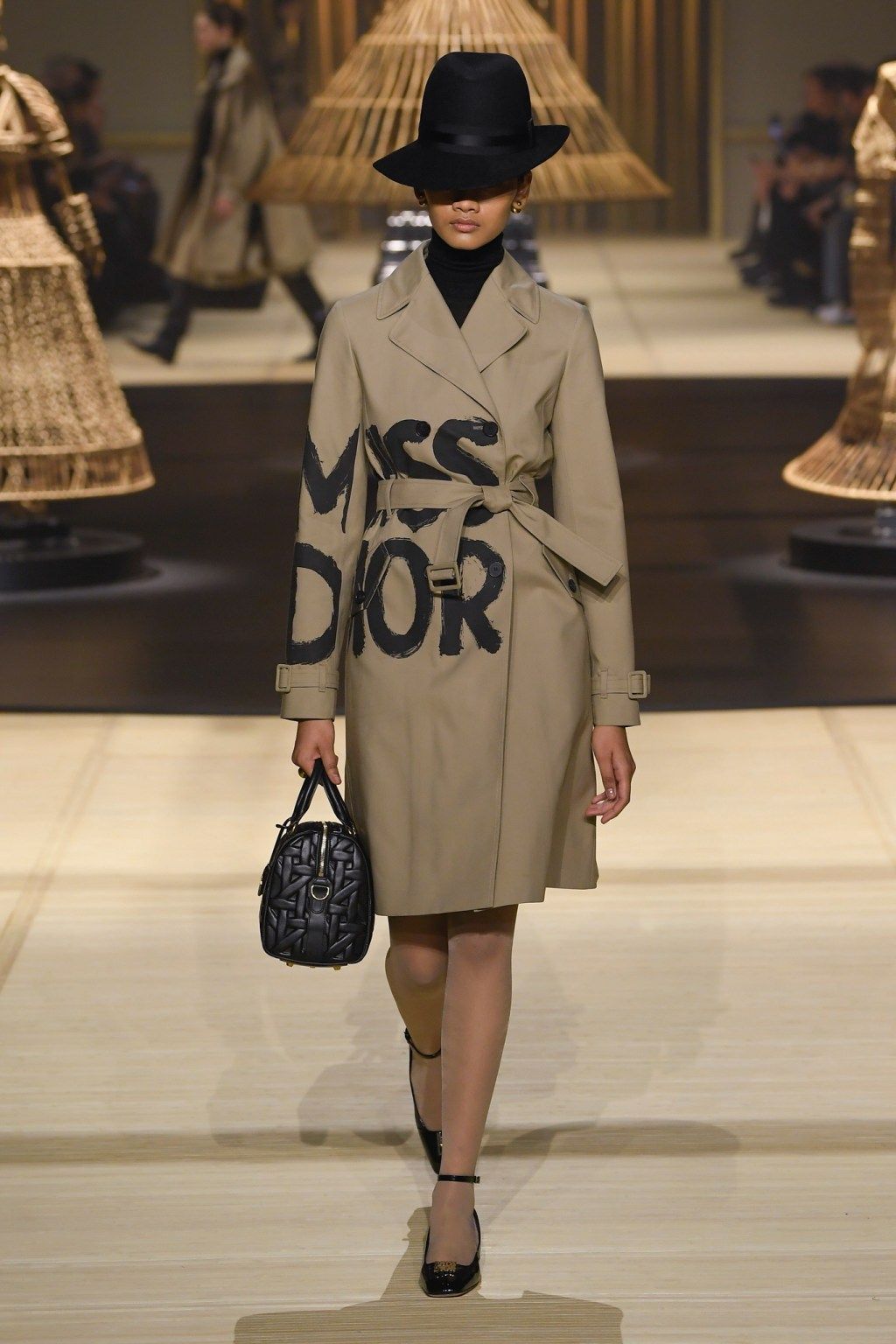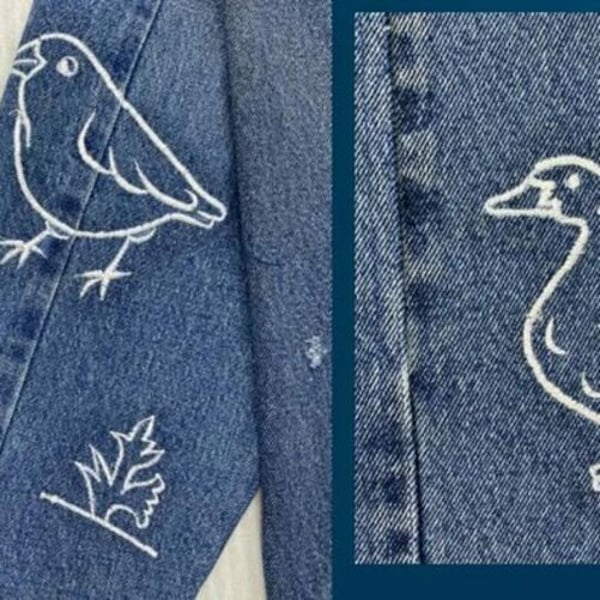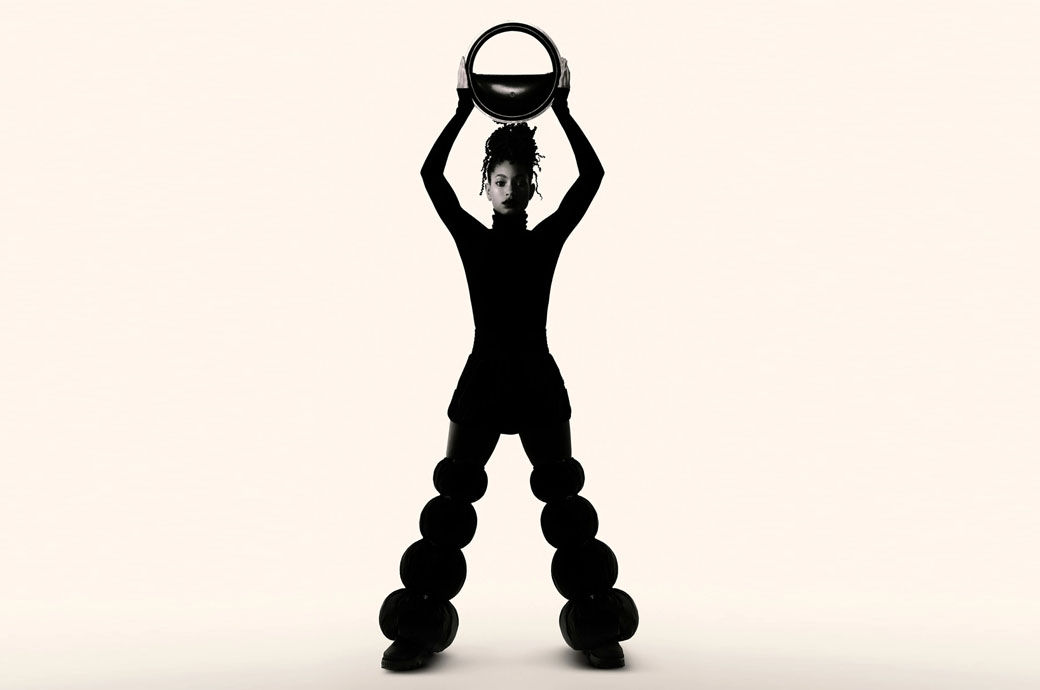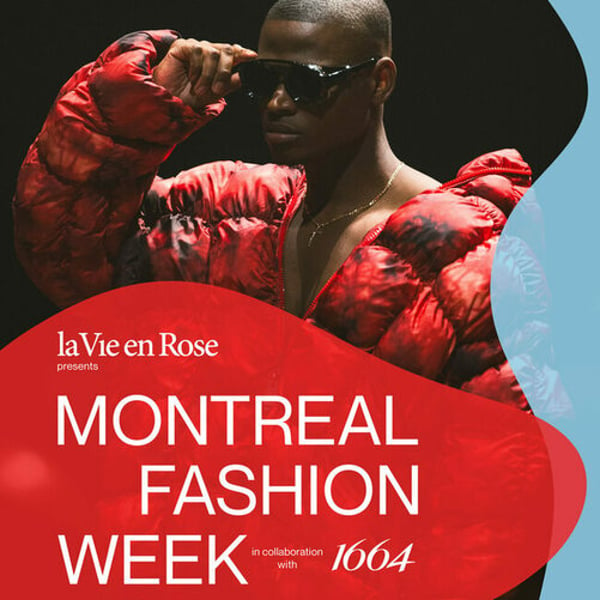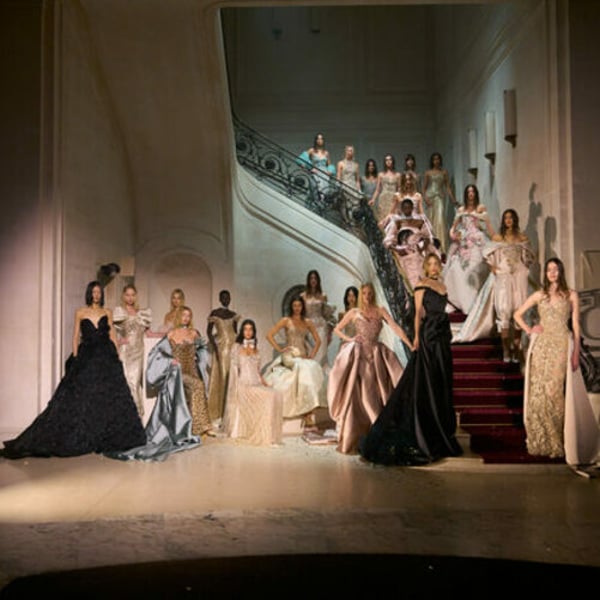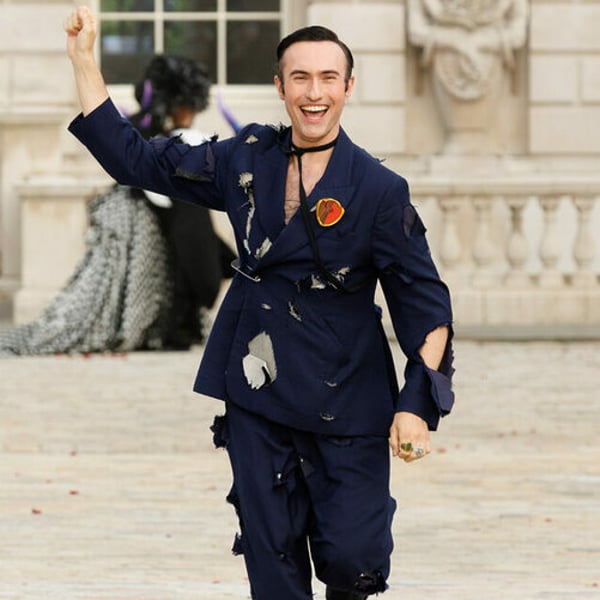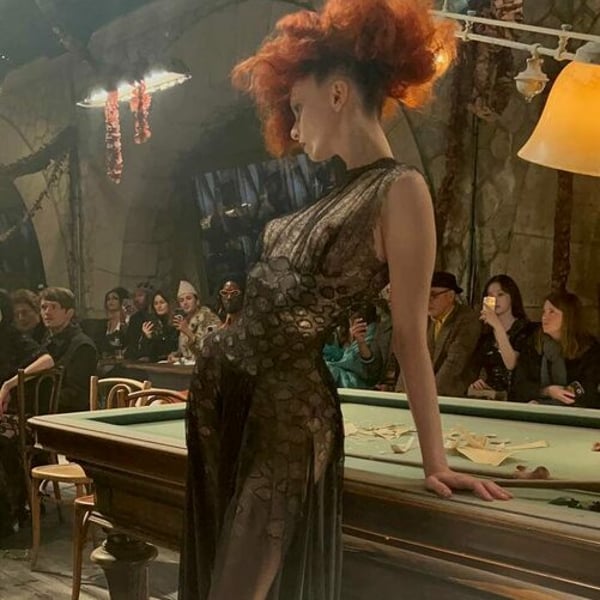Guests arriving at the Dior show stopped to film the installation in the center of the runway: nine life-size bamboo sculptures by Indian artist Shakuntala Kulkarni that looked like full-body armor.
Maria Grazia Chiuri's collection was about a different kind of shield: the outfits that women adopted in the '60s as they took their first steps in their careers in roles traditionally dominated by men.
The sexual revolution of that era was accompanied by a transformation of luxury fashion, when tailored haute couture gave way to ready-to-wear clothing that women with independent incomes could purchase for themselves.
Their fall lineup channeled the era's mix of confidence and ease with button-down miniskirts, belted trench coats, and loose-fitting pantsuits in a mostly monochrome palette. Black patent leather boots with buckles and gold ball-shaped heels added a kinky touch to knee-length wrap skirts and boxy plaid coats.
At the time, Yves Saint Laurent was the standard bearer of the burgeoning women's liberation movement with his provocative transparent designs, currently on display at the Yves Saint Laurent Museum in Paris.
But Chiuri wanted to pay tribute to the quiet revolutionary who was then at the helm of Dior: Marc Bohan, who in 1967 presented the brand's first ready-to-wear line, Miss Dior, the subject of a recent temporary exhibition at La Galerie Dior. the museum space in its historic flagship.
“His work at Dior was underrated in some ways, but I think it was very crucial,” he said in a preview. “She understood that women at that time were at a time when they wanted to change their lifestyle. “Her conversation was with the daughters of Dior clients.”
She pulled a slogan-style Miss Dior logo from a vintage scarf that prefigured the student protests that shook Paris in May '68. Its giant letters were plastered on her trench coats and “manifesto” skirts. Chiuri said she liked the way Bohan subverted the silk scarves traditionally associated with bourgeois style.
“They became like a blank page where you could write a slogan,” he said. “All the scarves at that time became like a flag, a way to use your voice.”
Chiuri has exploited this youthquake moment before, but her version this season had a more polished touch. He was also inspired by Italian interior designer Gabriella Crespi, who worked with Bohan on a line of home goods. “It was very elegant and also formal,” Chiuri noted.
Crespi's signature wide-brimmed hats marked the collection, and one could well imagine the elegant designer donning a diamond-edged top and skirt, or an oversized ivory cashmere double pant suit.
Chiuri isn't the only designer fascinated by the sporty, elegant styles of the '60s that paved the way for the minimalist elegance of the space age. It's territory that has been largely mined by Nicolas Ghesquière, whose Balenciaga-era designs were echoed in his bold checkered skirt suits and checkered outerwear.
But Chiuri, who was a teenager in the '60s, has a genuine personal connection to that era: Check out the grainy photo of her as a preteen, posing next to her mother in a dungaree minidress and white knee-high boots, which she posted on Instagram two days ago.
This largely explains her fondness for a period in history when all kinds of doors were opened for women, including her younger self.

